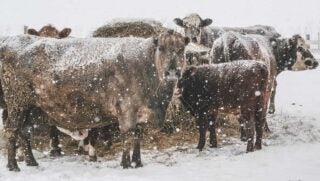Whether working on a farm or in a garden, everyone should be mindful of sun exposure and take precautions. This is great advice to heed (and share), especially during May, which is Skin Cancer Awareness Month.
Skin cancer is the most common of all cancers, and it’s on the rise. According to the Skin Cancer Foundation, one in five Americans will develop skin cancer by age 70, and more than two people die of skin cancer in the U.S. every hour. Additionally, the number of new invasive melanoma cases — the deadliest form of skin cancer — diagnosed annually increased 27 percent in the past decade.
But taking a few minutes to apply sunscreen, wearing long sleeves, and putting on a broad-brim hat can go a long way toward staying safe, said Russ Simpson, a cattle farmer, and Virginia Farm Bureau member.
“With the proper precautions, we can prevent a lot of skin cancer — especially among farmers, construction workers, and anybody out in the sun,” Simpson said.
For many farmers, skin cancer is a frightening reality.
Simpson was diagnosed with melanoma in 2007 after his primary care physician noticed a suspicious lesion. He was referred to a dermatologist for a biopsy, and the biopsy was caught early enough to be treated with minor surgery.
But he knows others who weren’t as fortunate.
“I lost my cousin about four years ago to melanoma,” said Simpson, who had noticed a suspicious lesion on his cousin and insisted he get it examined. “But by the time he went to the doctor, it was too late, and it had already gone into stage 4.”
Being familiar with the devastation skin cancer causes led Simpson to start a nonprofit, Iron Dog SCAR, that raises money to fund skin cancer research at the University of Virginia. When he’s not farming, Simpson spends his time educating others on the importance of sun safety.
“Farmers get exposed on their faces, hands and arms, especially the left side,” as they’re often working in tractors, Simpson noted. “The more sunburned you get throughout your life can greatly increase your probability of getting skin cancer.
“We need more attention given to this issue,” he added. “I think if people are reminded about it, they’ll get in the habit of taking precautions.”
The following are some sun safety tips:
- Try to stay in the shade between 10 a.m. and 4 p.m., when harmful UV rays are the strongest.
- Avoid sunburns.
- Wear long sleeves, long pants, broad-brim hats, and UV-blocking sunglasses.
- Regularly apply broad-spectrum, sweat- and water-resistant sunscreen with SPF 15 or higher to all exposed skin—including ears, hands, neck, and lips — and reapply at least every 2 hours.
- Perform a self-examination every month. If you notice suspicious lesions and moles—especially ones that are asymmetrical or change shape and color — see a doctor immediately.
- See a board-certified dermatologist annually for a professional skin exam.
This article was originally published by Virginia Farm Bureau.


